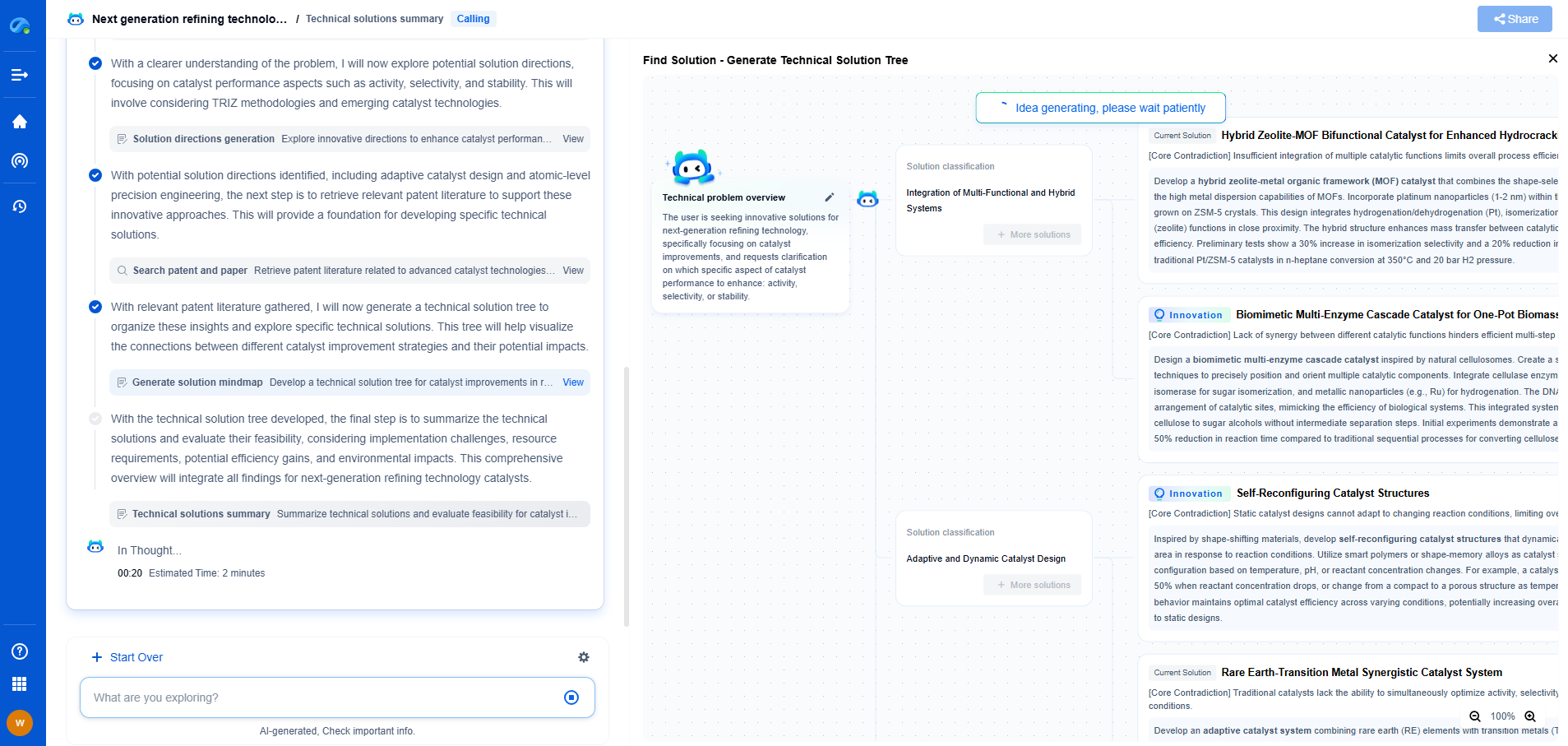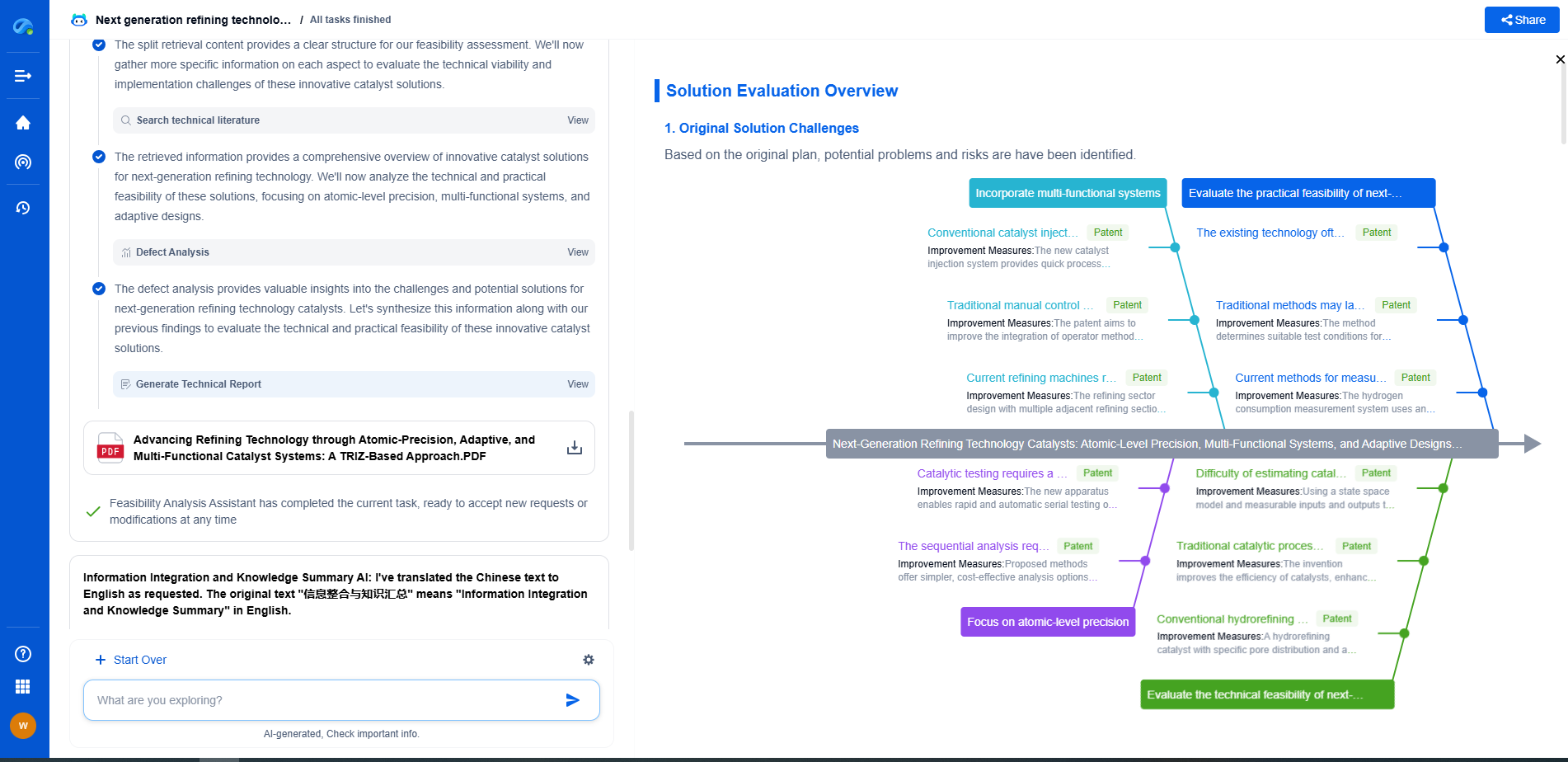How to Reduce Electromagnetic Interference in Power Systems
JUN 26, 2025 |
Electromagnetic Interference (EMI) is a significant concern in power systems as it can disrupt the normal operation of electronic devices and communication networks. EMI is the disturbance generated by an external source that affects electrical circuits, resulting in degraded performance or even complete failure of equipment. Understanding the sources and types of EMI is crucial for effectively mitigating its impact.
Sources of Electromagnetic Interference
Various factors contribute to EMI in power systems. These include:
1. **Switching Devices**: Devices such as relays, circuit breakers, and transformers can create EMI due to rapid changes in voltage and current during operation.
2. **Conducted Emissions**: Electrical noise conducted through power lines can interfere with other devices within the same network.
3. **Radiated Emissions**: Electromagnetic waves from power lines and electrical equipment can radiate into the environment, causing interference.
4. **External Sources**: Natural phenomena like lightning and man-made sources like broadcasting stations can also introduce EMI into power systems.
Identifying EMI Sources in Your System
Identifying the sources of EMI is the first step towards effective mitigation. This involves:
- **Conducting Site Surveys**: Regular inspections and measurements can help identify EMI sources within a power system.
- **Monitoring and Testing**: Use spectrum analyzers and other tools to monitor electromagnetic emissions and pinpoint problem areas.
- **Historical Analysis**: Reviewing past interference issues can provide insights into recurring problems and potential sources.
Strategies for Reducing EMI in Power Systems
Once EMI sources are identified, various strategies can be employed to reduce their impact:
1. **Shielding and Grounding**
Proper shielding of cables and equipment can significantly reduce EMI. Use metallic enclosures to block radiated emissions and ensure all equipment is properly grounded to prevent conducted emissions. Grounding creates a reference point for the system, reducing the potential for interference.
2. **Filtering and Surge Protection**
Implementing filters can help block unwanted frequencies from entering or exiting a device. Surge protectors can also prevent high voltage spikes, which can cause EMI. Both techniques are crucial for maintaining the integrity of power systems.
3. **Cable Management**
Proper cable management is critical in reducing EMI. Use twisted-pair cables to cancel out electromagnetic fields and maintain adequate separation between power and data cables. Avoid running cables parallel to each other, as this can increase the risk of interference.
4. **Use of Ferrite Cores**
Ferrite cores can be placed around cables to absorb high-frequency noise. These components are particularly effective in reducing EMI in power systems with numerous cables and high data rates.
5. **Design Considerations**
Incorporate EMI reduction techniques during the design phase of power systems. Choose components with low emission levels and ensure circuit board layouts minimize crosstalk and other interference issues.
6. **Regular Maintenance and Upgrades**
Regular maintenance can help identify and rectify EMI issues before they escalate. Upgrading equipment to newer models with better EMI suppression capabilities can also enhance overall system performance.
Conclusion
Reducing electromagnetic interference in power systems is critical for ensuring the reliability and efficiency of electronic devices and communication networks. By understanding the sources of EMI and implementing appropriate mitigation strategies, power systems can operate more effectively and with fewer disruptions. Regular monitoring, maintenance, and using modern technology are essential steps in managing EMI in today's complex electrical environments.
Empower Electromagnetic Innovation with Patsnap Eureka
From high-frequency antenna arrays and electromagnetic shielding to plasma propulsion and wave-based energy transfer, the electromagnetic domain sits at the core of next-generation technologies. Yet navigating its vast landscape of patents, research papers, and evolving technical standards can be time-consuming and complex.
Patsnap Eureka, our intelligent AI assistant built for R&D professionals in high-tech sectors, empowers you with real-time expert-level analysis, technology roadmap exploration, and strategic mapping of core patents—all within a seamless, user-friendly interface.
👉 Experience Patsnap Eureka today and transform how your team navigates the complexity of electromagnetic innovation.
- R&D
- Intellectual Property
- Life Sciences
- Materials
- Tech Scout
- Unparalleled Data Quality
- Higher Quality Content
- 60% Fewer Hallucinations
Browse by: Latest US Patents, China's latest patents, Technical Efficacy Thesaurus, Application Domain, Technology Topic, Popular Technical Reports.
© 2025 PatSnap. All rights reserved.Legal|Privacy policy|Modern Slavery Act Transparency Statement|Sitemap|About US| Contact US: help@patsnap.com

